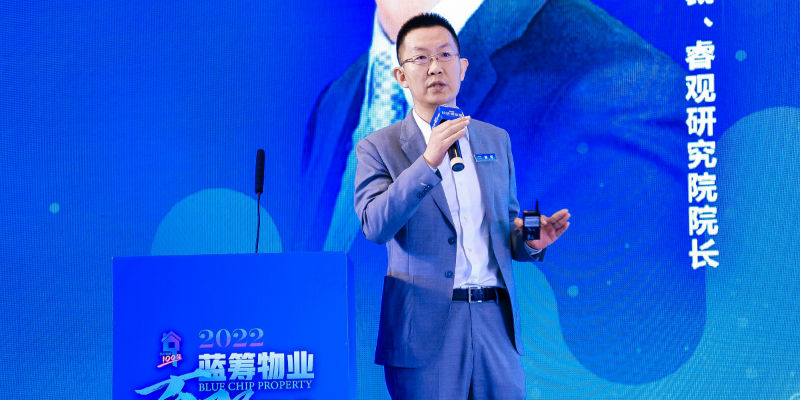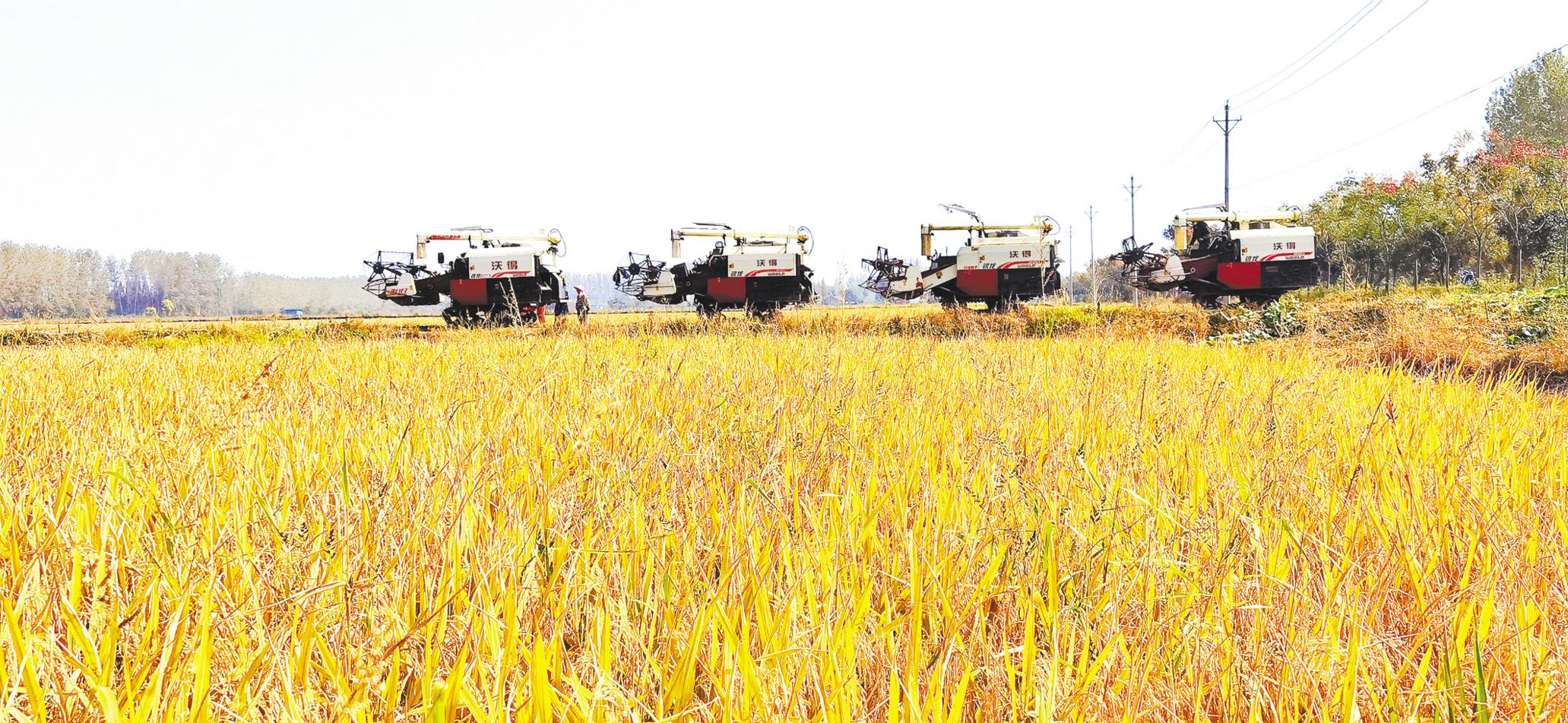Blue Chip Property Top 100 Summit | Hao Ju: From three challenges to see how property companies create competitive moats
Author:Economic Observer Time:2022.09.26

(Picture source: Economic Observation News)
Economic Observation Network reporter Chen Yueqin was affected by multiple factors such as the upstream and macroeconomics of real estate, and the valuation space given to the property stocks was also decreasing. This is the time point for reviewing the long -term development of property companies to develop their own moats. Industry participants should objectively examine their competitiveness and value.
On September 25th, at the top 100 blue chip property summit hosted by the Economic Observation News, Hao Ju, president of Ruixin Consulting and Dean of Ruiguan Research Institute, gave a keynote speech "Look at the future competitiveness of the property from the three challenges".
According to many years of observation of the property industry, Hao Ju concluded the five trends and characteristics of the current development of the industry, and put forward thinking: In the future, what does property companies have formed their own moats? Is the property a good business?
He believes that in the next two years, the property industry has entered a stage of development-calm-regression thinking, and the industry will move towards focusing or quality growth. The property business is all -encompassing, and even exceeds the company's capacity boundary and resource boundary. It is recommended that real -life companies return, focusing on the core main business, and some areas that can make efforts and focus on some areas of resource investment to form their own advantages.
The following is based on Hao Ju's speech:
From 2018 to 2020 is the peak stage of the listing of property enterprises. The industry growth is very fast. However, from last year, there are both external industry backgrounds and epidemic conditions. Some new changes.
At present, it is a time point for reviewing the long -term development of property companies to build their own moat, in order to objectively examine their competitiveness and value.
I summarize the five characteristics of the property industry at this stage:
First of all, the market structure is very interesting. The previous year we said that the industry has entered the middle of a chess game. At present, the "two super -strong" competitive pattern has been basically formed. The statistics in 2021 are that 8 revenues of more than 10 billion yuan, more than 5 billion yuan, this is the overall market situation. This means that in the future, the era of simply pursuing scale growth may have passed, and it will still grow in the future, and it will also merge and acquisition, but the growth rate of the industry will slow down.
Second, the top 30 listed property companies we have, with an average annual growth rate of more than 40%in 2021, and some companies have increased by 70%-80%. By 2022, we found that head companies were far ahead, and the gap between the waist companies of TOP30 and TOP50 was increasing, and competition was even more intense.
Third, from the perspective of income structure, the income of basic property management services, community value -added services, and non -owners' value -added services is 6: 2: 2, respectively, which basically become the mainstream structure, and the proportion of commercial operations in some enterprises has increased.
The revenue of property enterprises has begun to diversify, and the value -added services of the owners are also diversified. The main proportion of space and asset business is relatively high. The proportion of income contribution of second -hand housing intermediaries, decoration, community retail and living services is gradually increasing. Of course, each classification is different. Jinke's cultural tourism is relatively large, and Vanke does better in the rent and sale of second -hand housing.
Fourth, we have statistics. Last year, the unilateral property fee level of typical enterprises and the unilateral income of enterprise value-added services increased rapidly in 2019 and 2020. However It will grow slower.
Fifth, non -residential business has become the focus of the development of listed real estate companies. In the past two years, most of the strategy of property companies was to increase the proportion of business formats and market -oriented expansion. The proportion of non -residential business to income has reached more than 30%, and some companies actually exceed 50%, which is more interesting.
In the past three years, the property industry has gone through a roller coaster -like development stage, forming a triangle that cannot occur in many industries: first, fast growth, an average industry increased by more than 40%; second, good profits, and the top 30 listed property companies The average net interest rate is 13%, which means that some companies exceed 17%or even more than 20%; the third is that the risk is small. We have statistics on the proportion of cash and operating income in listed companies. This means that it has 1 billion yuan a year and 500 million cash stocks, which is not easy. But how long can this situation continue? At a certain point, some companies may have effect, but for a company, can it maintain high growth for a long time?
Based on this, we need to think about, in the future, what does property companies have formed their own moats? Is the property a good business? In the past, everyone did everything in acquisition, market, foreign extension, cooperation, and replacement formats. Whether it is in the format or value -added service category, it needs to be considered.
So, where is the moat of the property management business market? 2022 is a good period of reflection. At present, the property service industry is facing three major challenges: the first challenge is that the industry's cost rigidity rises and the contradiction between the property cost of the property fee. At present, more than 90%of the projects are the work of property fees. Can the efficiency and income of the main business of property management continue to improve in the future?
The second is the larger the scale, the higher the income and competitive advantage? This needs to clarify the differences between the two coordinates of the large scale and the high regional service density. The scale of property contracts has exceeded 1 billion square meters, but regional service density and management range are very poor. The third challenge is that the new business and the high profits are departure, and it is necessary to invest and continue to develop to have high profits. If the property company really makes the business into sustainable development, it will face another challenge. Is the owner's innovative value -added business making more money than property expenses? Sometimes, a certain type of business can reach 50%of the gross profit margin, but can the business level of the enterprise be realized?
From these three perspectives, where are the moats of the property service market competition? How does the property company build a moat?
Traditional economics believes that the service industry is at inefficient economic units, the cost continues to rise, and the production efficiency is much lower than the manufacturing industry. This is Poward Law. The cost of service has continued to increase over time, and labor costs have continued to rise. Compared with, the efficiency of manufacturing has continued to increase, which can reduce costs faster. When 70%of the future service costs are human workers, how can property companies make money? how to solve this problem? In particular, when the concentration of the regional area and the density of the region is insufficient, it is necessary to consider it.
Regarding the discussion of the total scale of the regional service density, Vanke has deployed more than 100 cities in the core and more than 300 cities in Country Garden. Although the area of the pipeline is 6-700 million square meters, when it comes to a certain city or area, the overall service density is small. Many; and regional focusing companies may be better like Greentown and Jinke. In terms of value -added service business, the biggest contradiction facing property companies is that the supply chain caused by insufficient service density cannot effectively integrate, thereby reducing costs and improving efficiency.
The business growth of property companies has three dimensions: acquisition and cooperation, format upgrade, and business reconstruction, especially in the process of business reconstruction, if you just want to be a platform and just want to introduce it through your own resources, then there is a core issue. How do you let partners cooperate with you? How do you lock the partner? If it is your self -built platform, how do you form professional service capabilities and scale effects?
The property industry is a trillion -dollar market. Each segment of the value -added field, whether it is education, retail, or group meals, there are hundreds of billions of ones, but when you really enter, you find that there is a big difference in the subdivision field. In the end, it is necessary to form a strong professional ability to face the competition of market -oriented enterprises in this field.
We believe that in terms of data, the property may still have data growth in the first half of 2022. This was reflected after the tide of mergers and acquisitions from 2019-2021. It's right.
The future is a focusing growth or quality growth. Therefore, looking back at the improvement of the competitiveness of property companies, I summarized it as three sentences -strategic fixed force first, the construction of the moat and the improvement of capacity improvement is the key.
Specifically, first of all, the development direction is the strategic fixation and the construction of the moat; the second is that it must return to the original intention and serve the supremacy. Focusing and strengthening the density of the area; fifth, technology empowerment becomes a breakthrough point for efficiency and improvement; sixth is management change. Through organizational flatization, business BU specialization, technology empowerment, etc., in all aspects Enterprises focus on the per capita efficiency, tighten the middle level, and improve management efficiency to become a focus at the moment.
In the next two years, the property industry has entered a stage of development-calm-regression thinking. Everyone thinks about how their own competitiveness should be formed; the other is the focus stage. Many things cannot be done. It is beyond the company's ability and resource boundaries. The property company needs to return. Focusing on the core main business and some areas that can make efforts and focus on resource investment to form their own advantages.
I have been optimistic about the development of the overall property industry and enterprises, but we fight for a long -distance running instead of a short -term competition.
- END -
From "low sale" to "hot sale" -Qianjiang shrimp and rice "fly" on the blue sky

Hubei Daily All Media Reporter Hu QiongyaoOn September 7, an ecological rice calle...
[New Era of Entrusted New Journal] New Era] The construction project of the digital industry innovation and entrepreneurial park in Baiyin District

On August 9th, in the silver area digital industry innovation and entrepreneurial ...